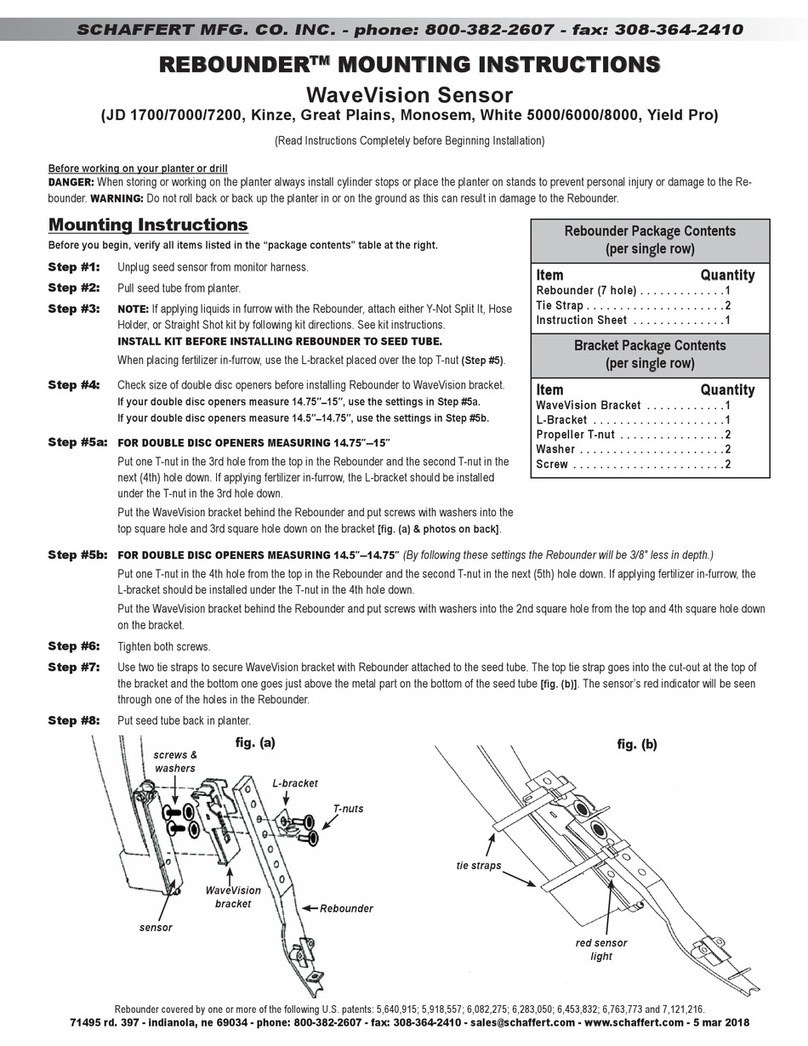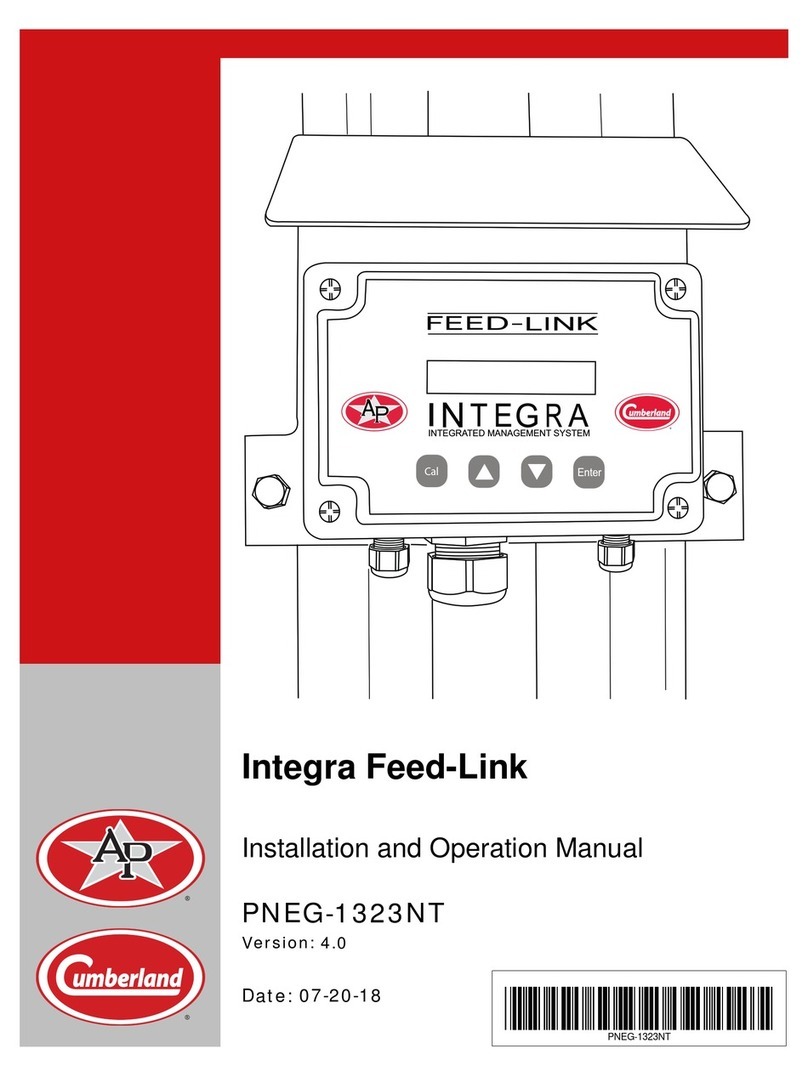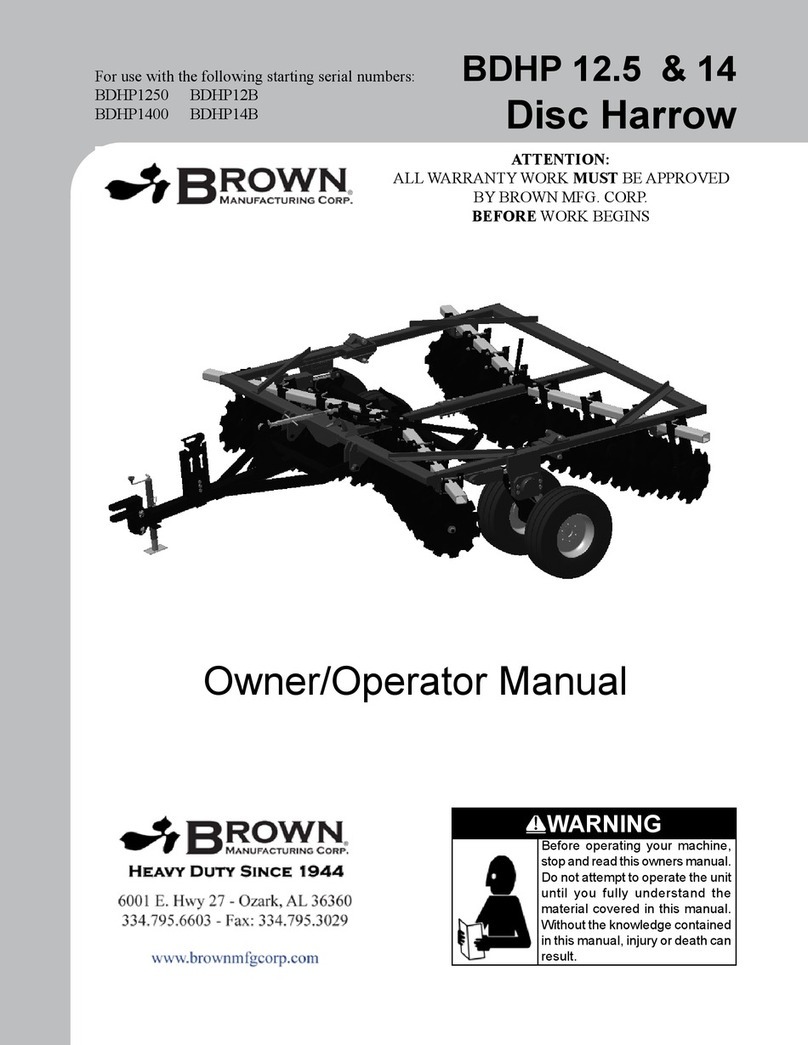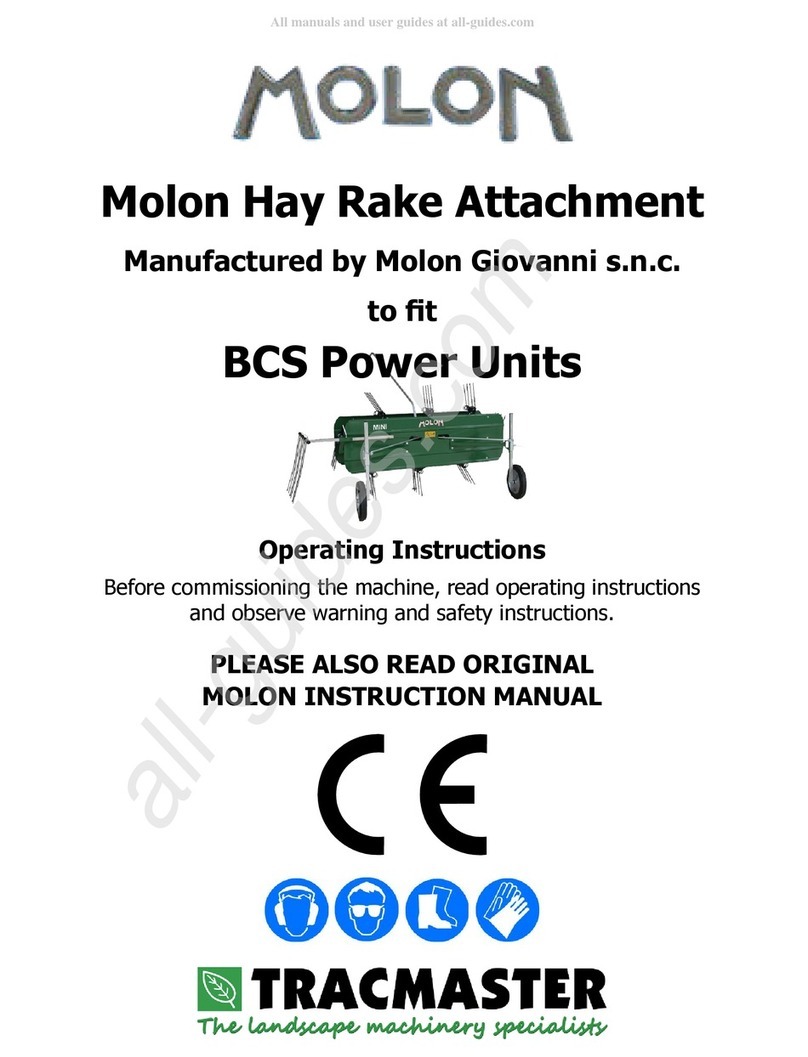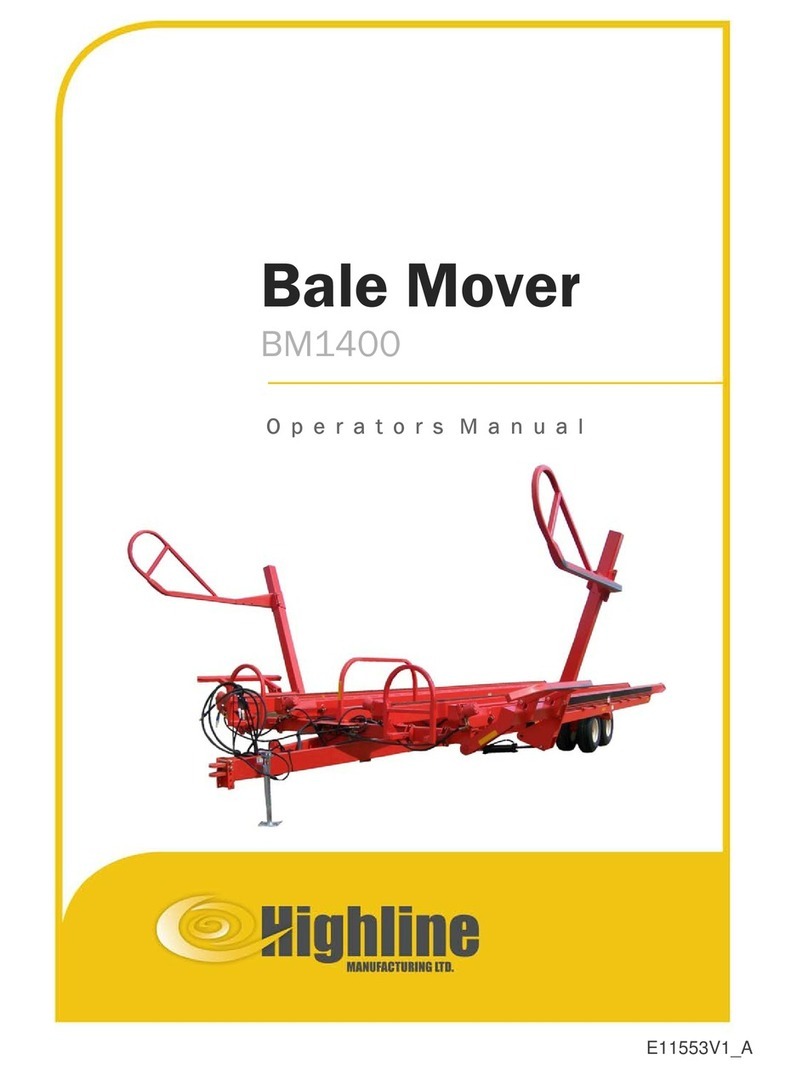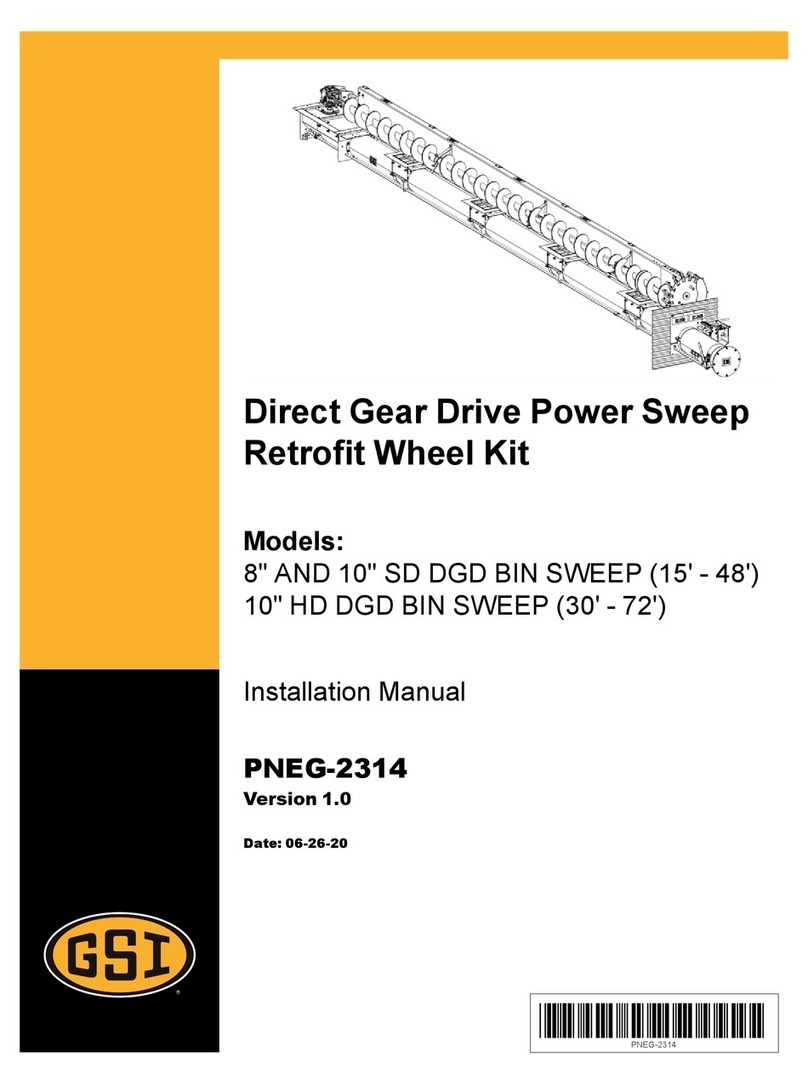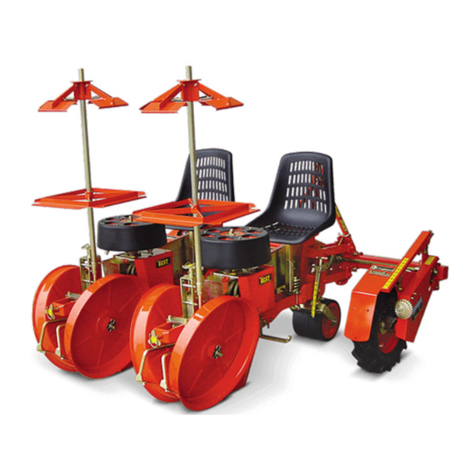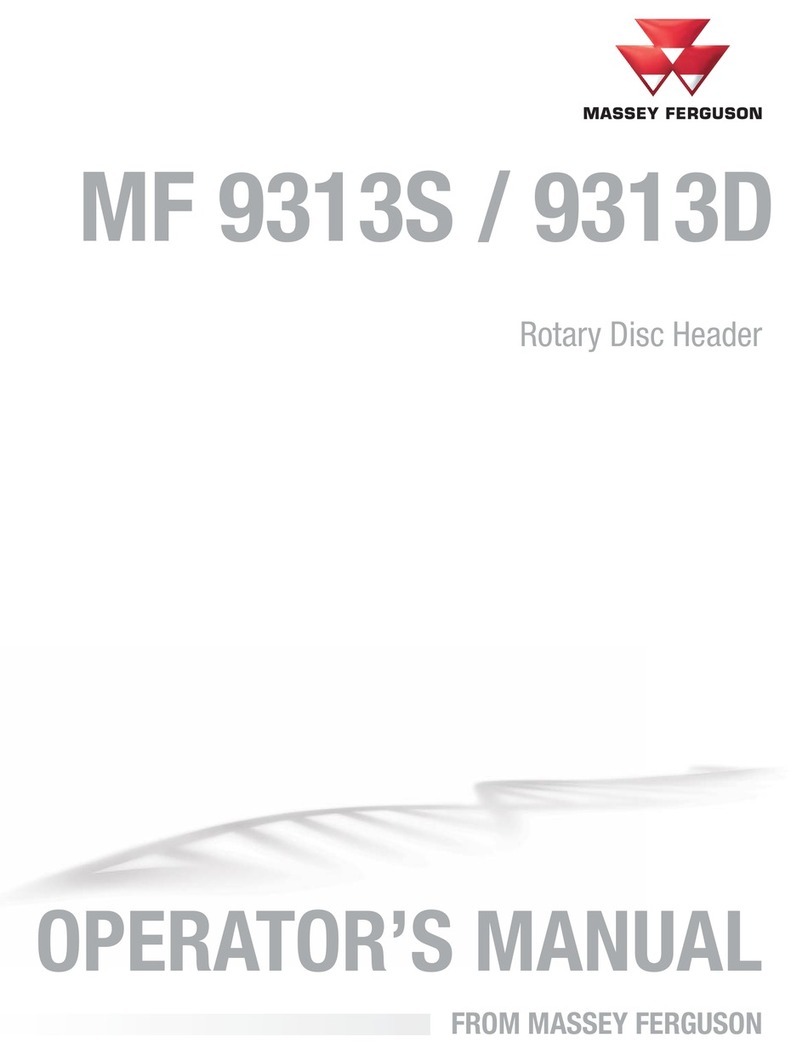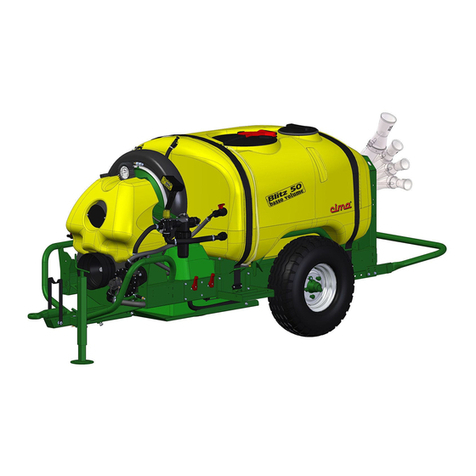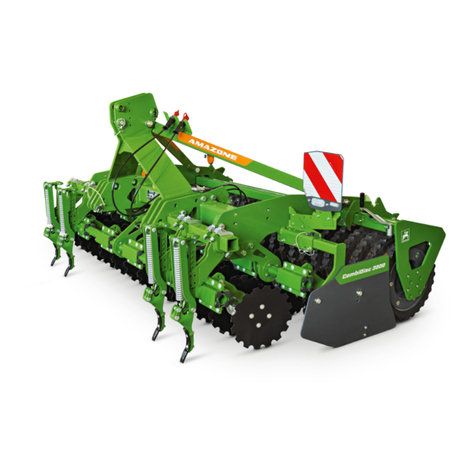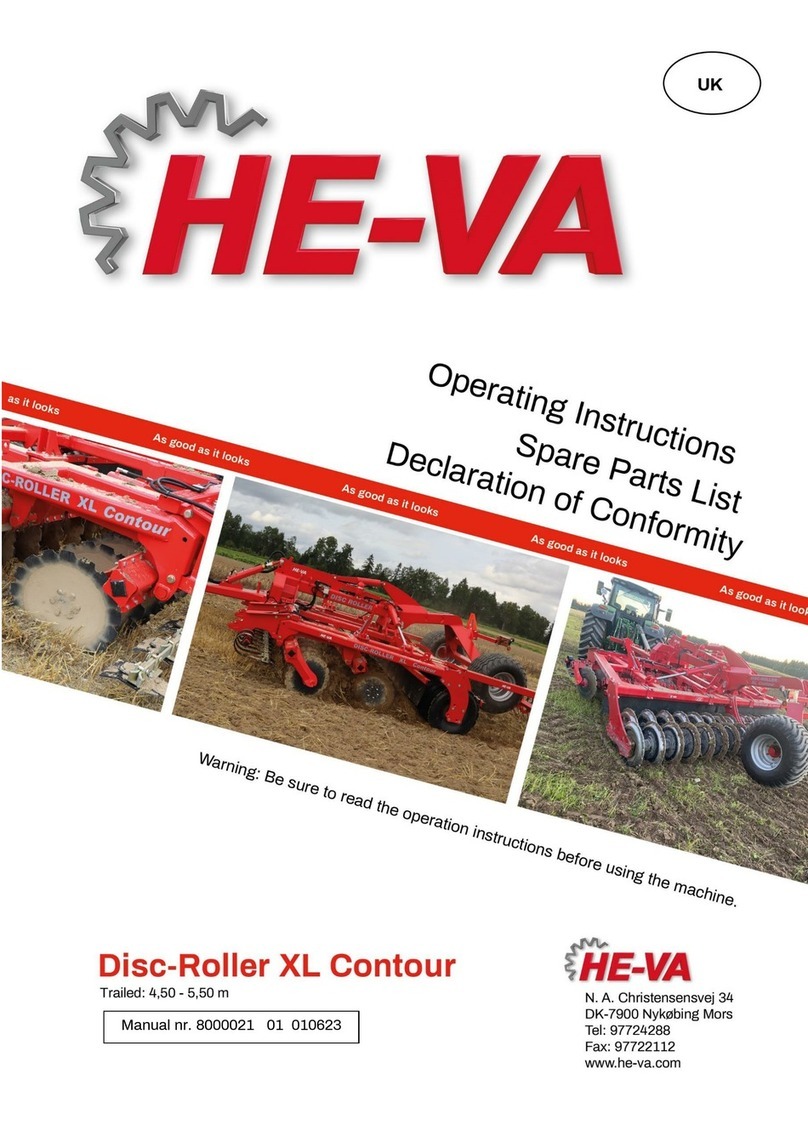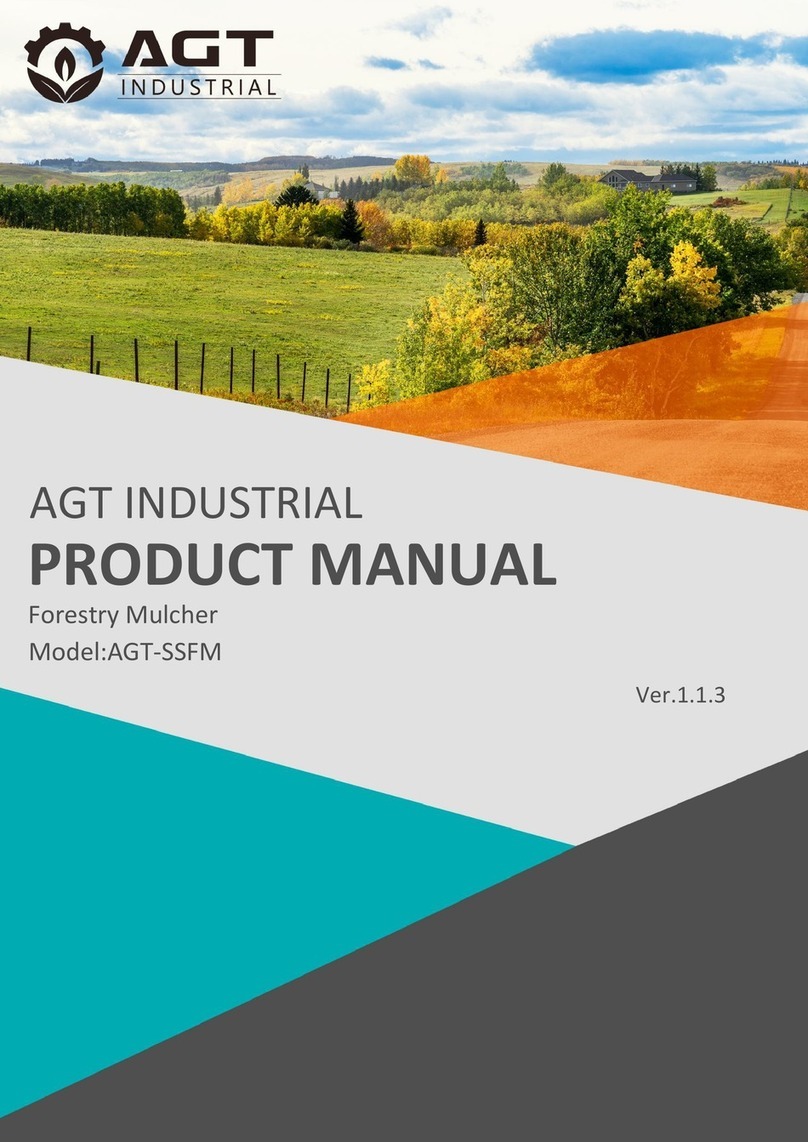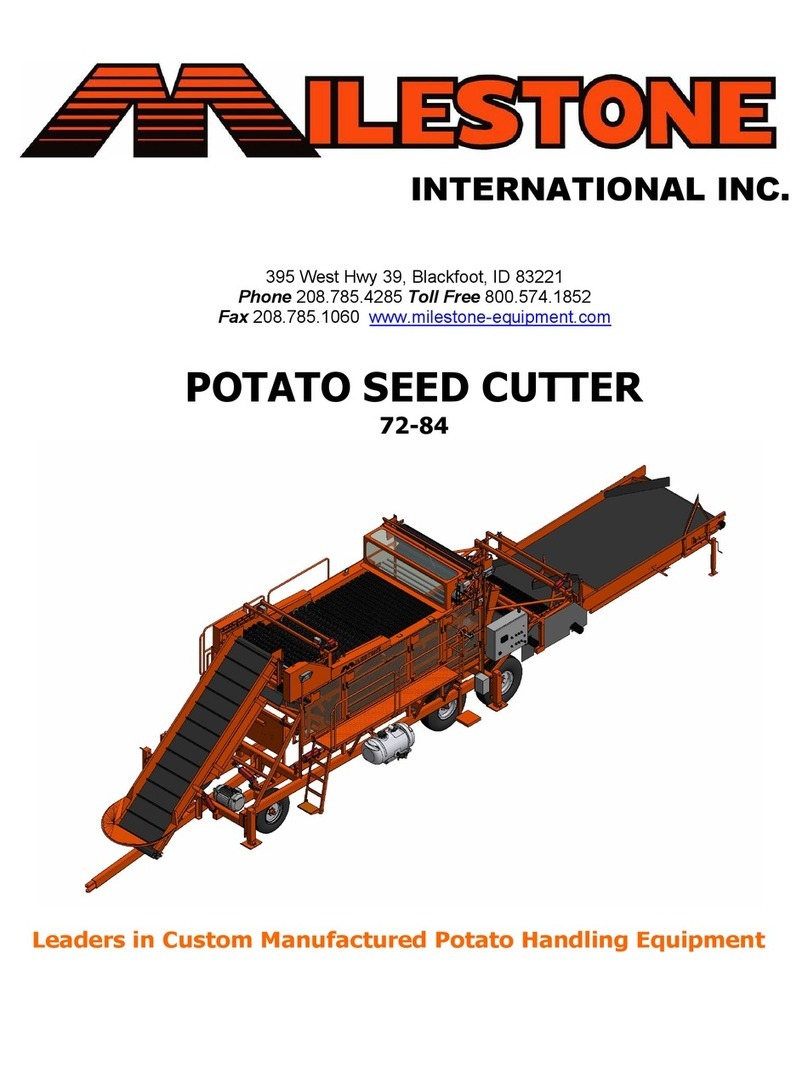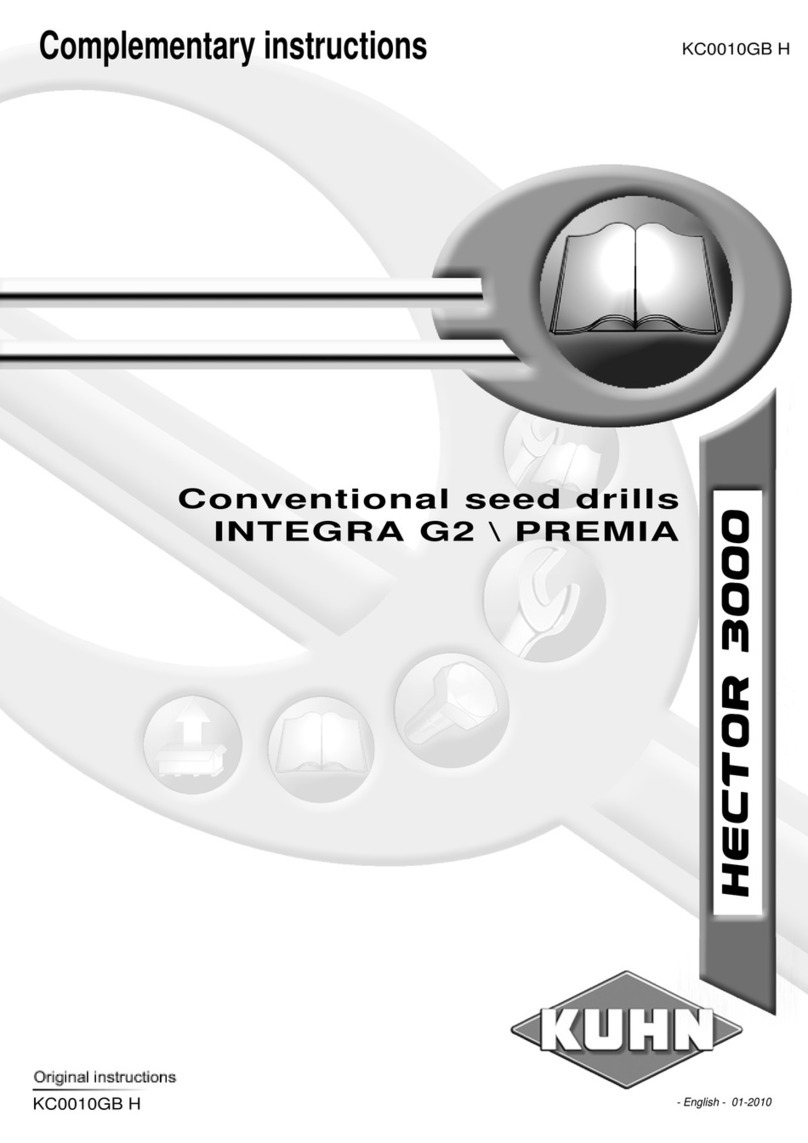Warranty
2
Warranty Information
Model and Year COE R10 Bankout
Customer Name
COE Representative
COE ORCHARD EQUIPMENT INC. WILL REPLACE OR REPAIR, AT COE OPTION, ANY COE
MANUFACTURED ITEM THAT IS, IN THE OPINION OF COE 1.) DEFECTIVE IN MATERIAL 2.)
DEFECTIVE IN WORKMANSHIP OR 3.) FAILURE DUE TO IMPORPER INSTALLATION FOR A
PERIOD OF ONE YEAR OR 500 HOURS WHICHEVER COMES FIRST FROM THE DATE OF
FIRST USE. THIS WARRANTY IS MADE IN LIEU OF ALL OTHER WARRANTIES EXPRESSED
OR IMPLIED. THIS DOES NOT IMPLY THAT EQUIPMENT MANUFACTURED BY COE IS
INDESTRUCTABLE, OR THAT COE WILL ACOMPLISH ALL SERVICE THAT THE MACHINE
MAY NEED. THE OWNER IS RESPONSIBLE FOR THE PROPER OPERATION AND SERVICE
OF THE MACHINE. THIS WARRANTY DOES NOT APPLY TO ANY PIECE OF EQUIPMENT
THAT HAS BEEN SUBJECT TO MISUSE, ACCIDENT, OR MODIFICATION. CERTAIN COMPO-
NENTS SUCH AS ENIGINES, HOSES, TIRES, PUMPS , MOTORS, ETC ARE COMPONENTS
THAT ARE PURCHASED AND INSTALLED BY COE. WHILE COE CONTROLS THE SELECTION
AND INSTALLATION OF THESE PRODUCTS BUT NOT THE MANUFACTURE OF SUCH ITEMS
THE COE WARRANTY ONLY APPLIES TO THE PROPER INSTALLATION BUT NOT THE
PRODUCTS THEMSELVES.THESE ITEMS ARE COVERED BY THE SPECIFIC MANUFACTUR-
ERS WARRANTY AND TERMS AND CONDITIONS. THE WARRANTY COVERS LABOR PARTS
AND MATERIAL FOR COE PRODUCTS AND THE INSTALLATION OF COMPONENTS. IT DOES
NOT HOWEVER COVER FREIGHT OR TRAVEL EXPENSES. ALL PURCHASED COMPO-
NENTS ARE COVERED BY THE SPECIFIC MANUFACTURERS WARRANTY AND TERMS AND
CONDITIONS. ALL LABOR , TRAVEL EXPENSE, FREIGHT AND MATERIAL WILL BE BILLED
TO THE CUSTOMER IN SUCH CASE. WHEN WARRANTY DETERMINATION IS MADE BY A
SPECIFIC MANUFACTURER THE CUSTOMERS ACCOUNT WILL BE CREDITED BACK THE
AMOUNT ALLOWED BY SPECIFIC MANUFACTURER. ITEMS EXCLUDED BY THIS
WARRANTY ARE SHAKER PADS, SLING AND FLAPS, BELTS,BELTING, TREE SEALS AND
ALL OTHER NORMAL WEAR ITEMS.
